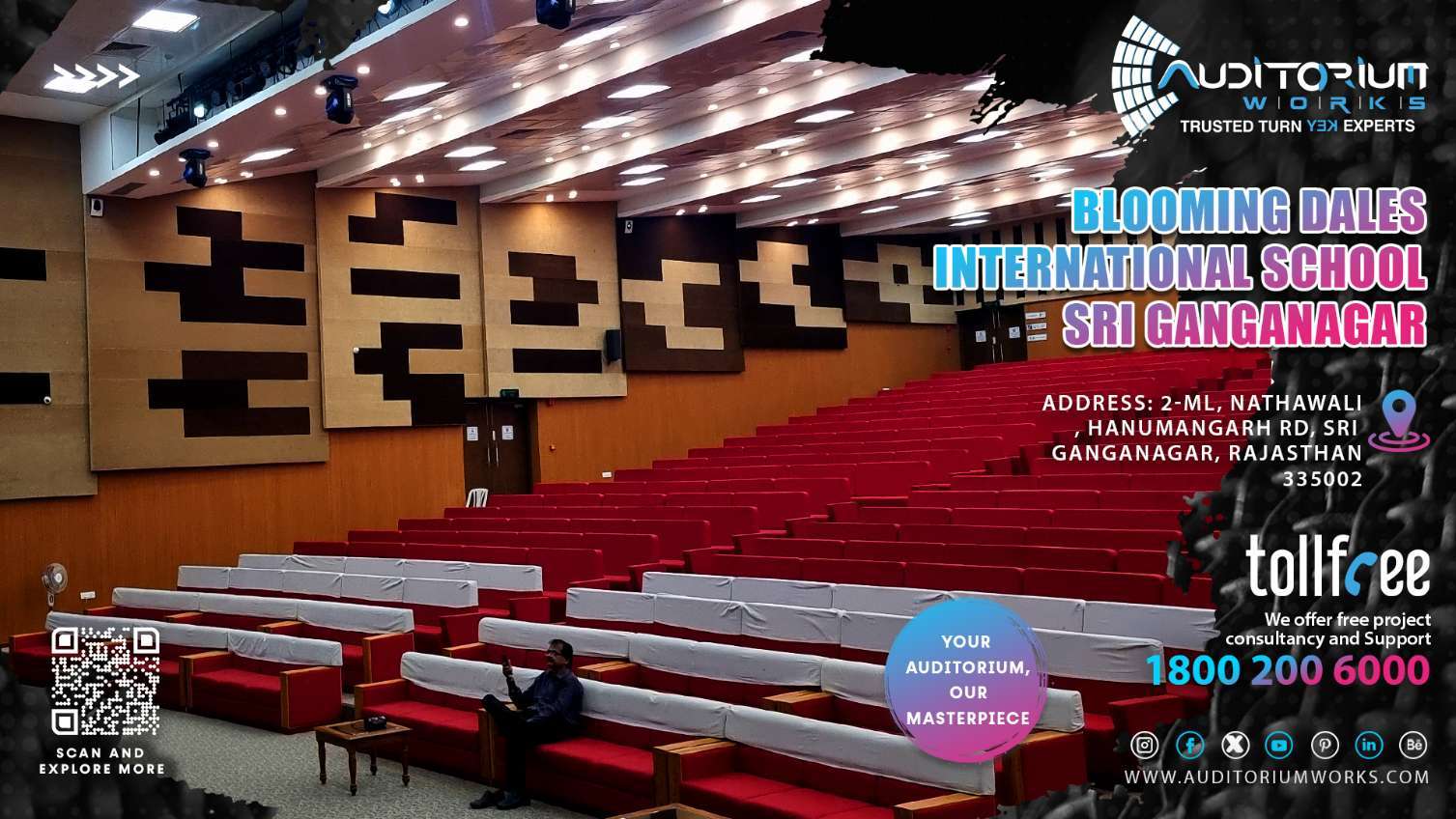“`html
Overcoming Challenging Auditorium Acoustics: Expert Solutions
Understanding the Acoustic Challenges in Auditoriums
Auditoriums, designed to host a variety of events from speeches and lectures to musical performances, often present unique acoustic challenges. The large volume of these spaces, combined with hard, reflective surfaces, can lead to excessive reverberation, echoes, and uneven sound distribution. These issues can significantly degrade the clarity and intelligibility of sound, making it difficult for audiences to fully appreciate the intended audio experience. Common acoustic problems include:
- Long reverberation times affecting speech intelligibility.
- Focusing of sound due to concave surfaces, creating hotspots and dead zones.
- Echoes that disrupt the clarity of the original sound.
- Insufficient sound levels in rear seating areas.
- External noise intrusion from traffic or adjacent spaces.
Analyzing Auditorium Acoustics: A Detailed Diagnostic Approach
The first step in addressing acoustic problems is a thorough analysis of the existing space. This typically involves:
- Acoustic Measurements: Using specialized equipment to measure reverberation time (RT60), sound pressure levels (SPL), and other key acoustic parameters.
- Room Geometry Analysis: Assessing the shape and dimensions of the auditorium, including the ceiling height, wall angles, and seating arrangement.
- Material Identification: Determining the sound absorption and reflection properties of the existing surfaces, such as walls, floors, and ceilings.
- Noise Source Identification: Pinpointing external noise sources that may be impacting the auditorium’s acoustic environment.
This comprehensive assessment provides a clear understanding of the acoustic issues and informs the development of targeted solutions.
Strategic Sound Absorption: Taming Reverberation and Echoes
Sound absorption is a crucial technique for reducing reverberation and echoes in auditoriums. By incorporating materials that absorb sound energy, we can prevent excessive reflections and create a more balanced acoustic environment. Effective sound absorption solutions include:
- Acoustic Panels: Fabric-wrapped fiberglass or mineral wool panels installed on walls and ceilings to absorb sound energy.
- Acoustic Baffles: Suspended vertically from the ceiling to increase the surface area for sound absorption.
- Acoustic Diffusers with Absorptive Elements: Combining diffusion to scatter sound with absorption to reduce overall energy.
- Upholstered Seating: Using seating with significant fabric covering to absorb sound, especially when the auditorium is unoccupied.
- Carpeting: Covering floors with carpeting to absorb sound reflections and reduce impact noise.
Sound Diffusion: Achieving Uniform Sound Distribution
While sound absorption is essential for controlling reverberation, sound diffusion plays a vital role in creating a more uniform and natural-sounding acoustic environment. Diffusers scatter sound waves, preventing the formation of strong reflections and creating a more even sound distribution throughout the auditorium. Common types of sound diffusers include:
- Quadratic Residue Diffusers (QRDs): Mathematical sequences of wells and fins that scatter sound waves in a predictable manner.
- Primitive Root Diffusers: Similar to QRDs but based on different mathematical principles.
- Geometric Diffusers: Irregularly shaped surfaces that scatter sound waves randomly.
- Poly Cylindrical Diffusers: Curved surfaces that provide broad diffusion across a wide frequency range.
Shaping Sound: The Power of Reflectors and Geometry
Strategic placement of reflectors can enhance sound projection and improve sound levels in specific areas of the auditorium. Reflectors are typically hard, smooth surfaces that redirect sound waves towards the audience. Careful consideration of the auditorium’s geometry is also crucial for optimizing sound distribution. This includes:
- Ceiling Reflectors: Angled panels suspended from the ceiling to reflect sound towards the rear seating areas.
- Wall Reflectors: Angled surfaces on the side walls to improve sound distribution and create a sense of envelopment.
- Stage Design: Designing the stage with appropriate angles and reflective surfaces to project sound towards the audience.
- Room Shape Optimization: Addressing concave surfaces that can focus sound and creating a more balanced acoustic environment.
Noise Isolation: Protecting the Auditorium’s Acoustic Integrity
External noise intrusion can significantly degrade the acoustic performance of an auditorium. Effective noise isolation techniques are essential for creating a quiet and distraction-free environment. These techniques include:
- Soundproofing Walls and Ceilings: Adding mass and damping to walls and ceilings to reduce sound transmission.
- Acoustic Doors and Windows: Installing specialized doors and windows with high sound transmission class (STC) ratings.
- Sealing Air Gaps: Sealing any gaps or cracks in the building envelope to prevent sound leakage.
- Vibration Isolation: Isolating mechanical equipment, such as HVAC systems, from the building structure to prevent vibration transmission.
Expert Acoustic Consultancy: Tailored Solutions for Optimal Sound
Overcoming challenging auditorium acoustics requires a comprehensive and tailored approach. Engaging an experienced acoustic consultancy ensures that all aspects of the acoustic environment are carefully considered, from the initial analysis to the final implementation of solutions. A qualified consultant can:
- Conduct thorough acoustic assessments and identify specific problem areas.
- Develop customized acoustic designs that address the unique needs of the auditorium.
- Select appropriate materials and solutions based on performance, aesthetics, and budget.
- Oversee the installation and commissioning of acoustic treatments to ensure optimal results.
By partnering with an acoustic consultancy, you can transform your auditorium into a space that delivers exceptional sound quality for all attendees.
“`



